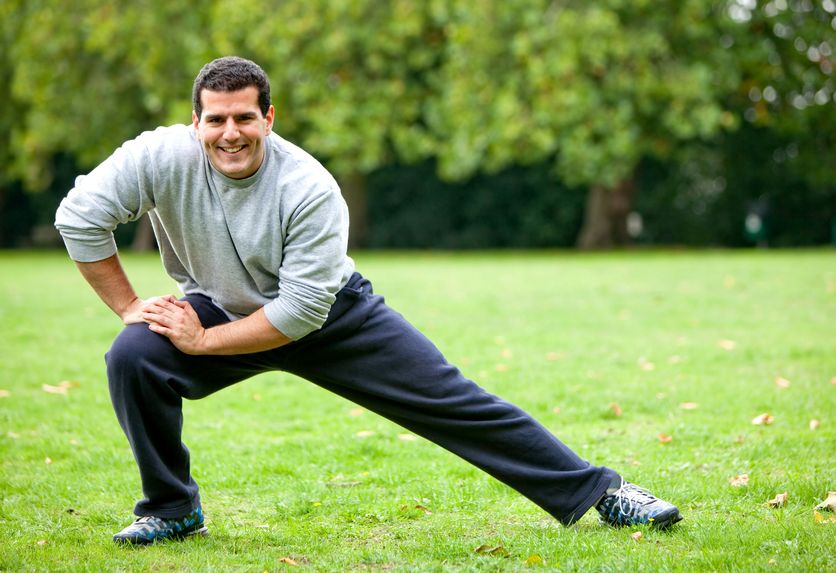Snapping Hip Syndrome

Tid Bits of Info
- Snapping hip syndrome is usually more annoying than painful.
- Rarely is this syndrome a result of intra-articular cartilage damage.
- General stretching and strengthening of the hip and core musculature can help to prevent this syndrome from occurring.
- Ice, NSAIDs and some prescription drugs can help to alleviate the symptoms.
- Seek the advice of a Physical Therapist for specific exercises to perform.
Do you ever hear a snap or feel snapping sensation in your hip when walking, sitting, or moving around? Snapping hip is a common condition. Almost everyone has experienced a “pop” or “crack” sensation in one of their joints at some time. Most of these sensations fall into the “don’t worry about them” category. If the snapping hip sensation becomes annoying or is accompanied by pain, then you should consider having it diagnosed by a qualified healthcare provider.
What Causes Snapping Hip?
Snapping hip commonly results from a tendon (attachment of muscle to bone) that gets “caught” on a piece of bone (a prominence) as it courses across it during joint movement. To get a clearer picture, consider the hip joint. It is a ball and socket joint. The Femoral head is the ball the Acetabulum is the socket. The joint is held together with extremely strong ligaments and moved by the surrounding muscles. The tendons of the muscles are protected from excessive rubbing on the bones by fluid filled sacks called bursae. Most causes of this syndrome are due to extra-articular occurrences, but there can be intra-articular causes, also.
Healthcare providers attempt to diagnose the specific cause by locating the where the snapping actually occurs. When the snapping sensation occurs on the outside (lateral) aspect of the hip joint, the primary cause is the Iliotibal band or IT band. When it occurs on the medial side or near the groin area, it is caused by the hip flexor tendons (Iliopsoas or Rectus Femoris). If the sensation occurs in the back or near the buttock, it can be caused by the hamstring tendon rubbing across the Ischial Tuberosity.
On rare occasions the snapping sensation can be caused by an internal derangement of the cartilage or an intra-articular issue. This sensation is usually painful and is best diagnosed with a MRI that has dye added when the scan is performed. Eventually the patient might have to have surgery to repair or correct the condition.
The IT band is a thick tendon that extends from the upper side of the hip near the buttock and courses down the lateral aspect of the thigh and crosses the knee joint. It helps to extend the hip and flex the knee. When the hip is in neutral or extension, the IT band rests behind the greater Trochanter of the femur. When the hip moves into a flexed position during any form of gait, the IT band slides across the greater Trochanter. If the band of tendon tissue is tight, it can rub excessively on the greater Trochanter and even get “caught.” When it releases due to the hip moving back into an extended position, it can “snap.” If this continues for an extended period of time, the bursae that surrounds the greater Trochanter might get inflamed and become the primary cause of pain.
When the snapping originates from the front of the hip, it is usually caused by the hip flexor tendon that originates or inserts in that area. The Rectus Femoris tendon can be involved, but more commonly the Iliopsoas (actually two muscles Iliacus and Psoas) which courses over the front of the joint and can get “caught” on a bony prominence.
The snapping sensation that originates from the posterior aspect of the joint usually stems from a portion of the hamstring muscle group getting caught on the Ischial Tuberosity.
Treating Snapping Hip
By consulting your Physical Therapist, you can learn the best treatment protocols. These will usually include stretching and strengthening of all of the hip musculature.
If the joint capsule (a thick, strong leather like ligamentous structure that holds the bones together) is restricted it can cause the muscles to “work” extra hard to move the bones and create an environment that begins the snapping process. Your Physical Therapist can help stretch the capsule and other soft tissue around the joint to ensure that it has full motion. Your Physical Therapist will include core strengthening exercises and check the position and anatomy of your feet to evaluate the possible need for orthotics that are worn in your shoes.
Snapping hip syndrome occurs in many people and is usually benign. The time to worry about this condition is when there is a painful sensation associated with the snapping sound. If the snapping sound is annoying or painful you should address it by seeking the advice of a qualified healthcare professional who can give you the proper treatment protocols to follow to reduce the symptoms.


























I think this article provides a great explanation for the “popping”, “snapping”, or “cracking” sounds people experience. Many people think that these sounds are a result of bone-on-bone movement, and associate it with getting old.